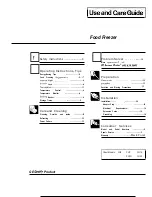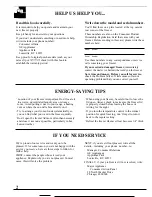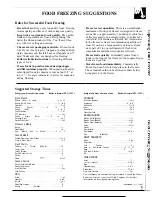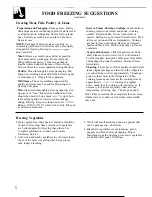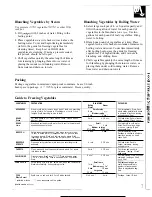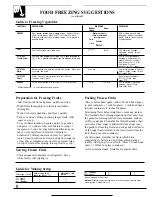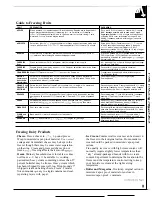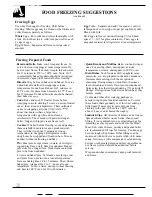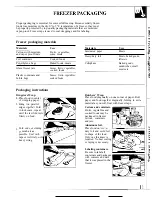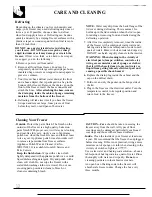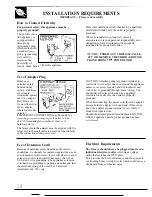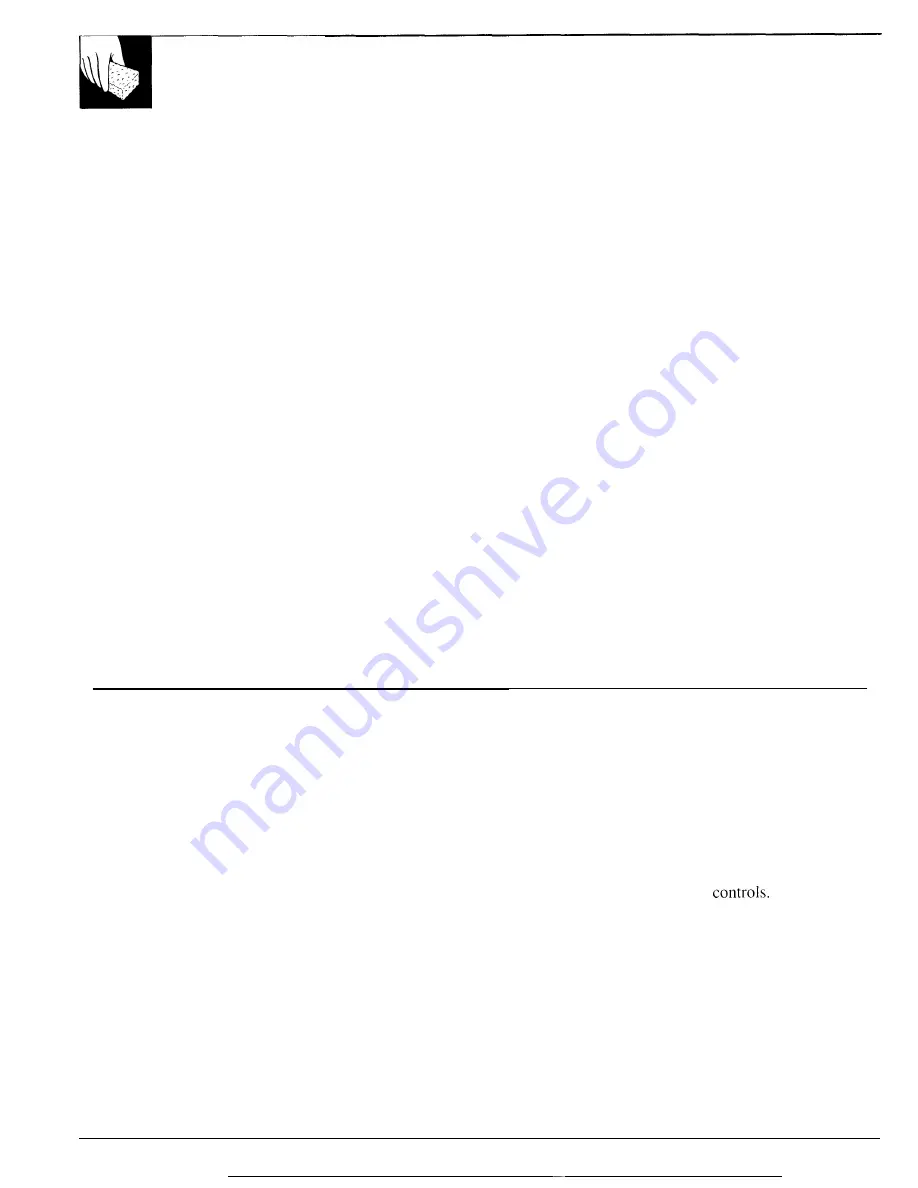
CARE AND CLEANING
Defrosting
Depending on the climate you live in, humidity and
usage, your freezer may need defrosting only once or
twice a year. If possible, choose a time to defrost
when food supply is lowest. Defrosting can be done
quickly and easily by scraping freezer surfaces with a
plastic scraper or wooden spatula when frost is more
than 1/4 inch thick.
DO NOT use any electrical device in defrosting
your freezer. DO NOT use an ice pick or sharp
edged instrument as it may damage or scratch the
freezer. If frost is too thick or too hard to be scraped,
we suggest you do the following:
1. Remove power cord from outlet.
2. Remove all food from freezer. Food may be
temporarily stored in large corrugated paper boxes,
insulated bags, towels or wrapped in newspapers to
preserve coldness.
3. Your freezer has a defrost water drain at the front
and a hose adapter that is packaged in a bag in the
bottom of the freezer. Remove the drain cap on the
front of the freezer, insert the hose connector and
attach the hose. After attaching the hose, remove
the drain plug inside the cabinet. Sponge remaining
moisture from the bottom of the freezer.
4. Defrosting will take less time if you have the freezer
lid open and remove large, loose pieces of frost
before they melt, or add pans of hot water.
Cleaning Your Freezer
●
Outside. Protect the paint finish. The finish on the
outside of the freezer is a high quality, baked-on
paint finish. With proper care, it will stay new-looking
and rust-free for years. Apply a coat of appliance
polish wax when the freezer is new and then at least
twice a year. Appliance polish wax also works well
to remove tape residue from freezer surfaces.
Appliance Polish Wax & Cleaner (Cat No.
WR97X02 16) is available from GE Service and
Parts Centers.
Keep the finish clean. Wipe with a clean cloth
lightly dampened with appliance polish wax or mild
liquid dishwashing detergent. Dry and polish with a
clean, soft cloth. Do not wipe the freezer with a
soiled dishwashing cloth or wet towel. Do not use
scouring pads, powdered cleaners, bleach, or
cleaners containing bleach.
12
NOTE: Water may drip from the back flange of the
lid cover during defrosting. This is normal. Ice
builds up in the lid insulation when the lid is open
for adding or removing food and melts during the
defrosting operation.
5. After frost is completely removed, rinse the inside
of the freezer with a solution of warm water and
baking soda (about one tablespoon of soda to each
quart of water). Rinse with clean water and wipe dry.
DO NOT use harsh or gritty cleaners in the interior.
WARNING: When cleaning in the vicinity of
electrical parts (lamps, switches, controls, etc.)
wring excess moisture out of sponge or cloth so
that it will be barely damp to prevent water or
liquid from getting into any electrical part and
causing a possible shock hazard.
6. Replace the drain plug inside the cabinet and the
cap on the defrost drain.
7. Fold over and dry the gasket on the hinge side of
the lid.
8. Plug in the freezer at the electrical outlet. Turn the
temperature control to its regular position and
return food to the freezer.
CAUTION—Care should be taken in moving the
freezer away from the wall. All types of floor
coverings can be damaged, particularly cushioned
coverings and those with embossed surfaces.
●
Inside. Clean the inside of your freezer at least once
a year. We recommend that the freezer be unplugged
before cleaning. If this is not practical, wring excess
moisture out of sponge or cloth when cleaning in the
vicinity of switches, lights or
Use warm water and baking soda solution—about a
tablespoon of baking soda to a quart of water. Rinse
thoroughly with water and wipe dry. Do not use
cleaning powders or other abrasive cleaners.
An open box of baking soda in the freezer will
absorb stale freezer odors. Change the box every
three months.

